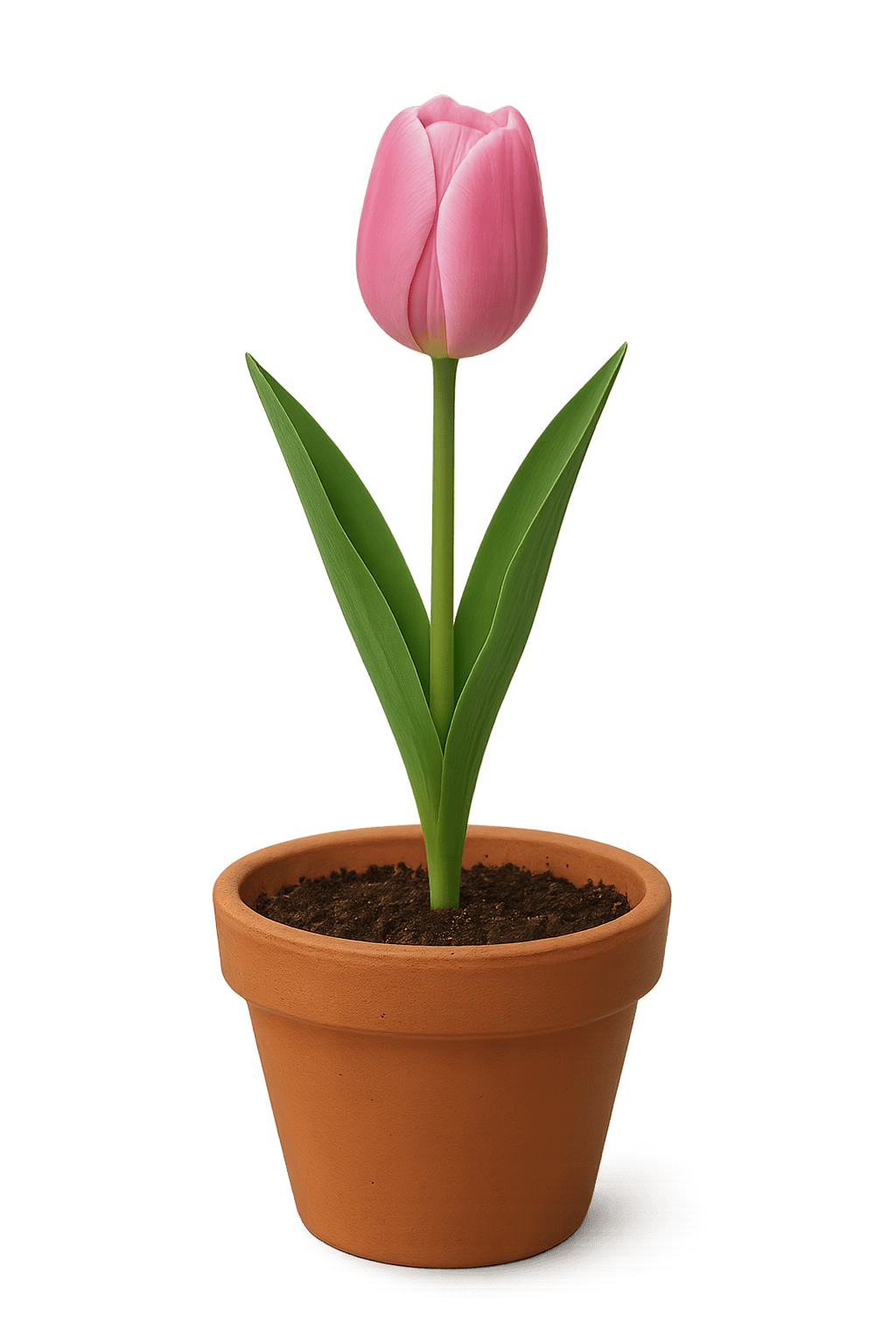Tulip
Tulip Detailed Encyclopedia Introduction
Tulip is a symbol of spring, rich in color, elegant in shape, the national flower of the Netherlands, suitable for potted and ground planting.

Basic Info
Family:Liliaceae
Scientific Name:Tulipa
Origin:Central Asia, Turkey
Flowering Period:Spring
Height:10-70cm
Lifespan:Perennial bulb
Morphology
Leaves:Long oval, green, smooth surface
Flowers:Bell or cup shaped, 6 petals, bright colors
Roots:Bulbous, scaly
Stem:Erect, hollow
Growth Habits
Soil Requirements:Loose, well-drained sandy soil
Watering Needs:Keep soil slightly moist, avoid waterlogging
Light Requirements:Prefers ample sunlight, avoid strong direct light
Temperature Requirements:10-20°C, needs winter cold
Classification & Varieties
Main Classifications
Ornamental Varieties
Professional Care
✂️ Pruning Management
Pruning Timing:Prune flower stalks after flowering, keep leaves until natural withering
Pruning Method:Cut off flower stalks, keep leaves for photosynthesis
Pruning Purpose:Accumulate nutrients for bulbs, promote flowering next year
Required Tools:Sharp scissors, gloves
🛡️ Pest & Disease Management
Common Pests:
Common Diseases:
Prevention Measures:Choose healthy bulbs, avoid continuous cropping, maintain ventilation
Treatment Methods:Crop rotation, soil disinfection, remove diseased plants
🌱 Fertilization Management
Fertilizer Type:Phosphorus-potassium fertilizer, bulb-specific fertilizer
Fertilization Frequency:Base fertilizer at planting, 1-2 top dressings during growth
Fertilization Timing:At planting, budding period, after flowering
Fertilization Amount:50-100g base fertilizer per square meter
💧 Water Requirements
Watering Frequency:Keep soil slightly moist, avoid over-wetting
Watering Amount:Moderate watering, bulbs fear waterlogging
Watering Method:Water at roots, avoid wetting leaves
Dehydration Signs:Yellow leaves, bulb rot, stunted growth
Basic Care Tips
- •Prefers ample sunlight, but avoid strong afternoon sun
- •Keep soil moist, but avoid waterlogging
- •After flowering, cut off flower stalks, keeping leaves
- •Apply phosphorus and potassium fertilizer in autumn
- •Ensure good ventilation to prevent fungal diseases
Ecology Value
Pollinators:Bees, butterflies
Wildlife:Provides nectar for early spring insects
Environmental Value:Important component of spring landscape
Cultural Symbolism
Symbolic Meaning:Symbol of perfection, eternity, and wealth
Historical Background:National flower of Netherlands, 17th century tulip mania
Related Festivals:Dutch Tulip Festival
Artistic Expression:Important theme in Dutch Golden Age painting